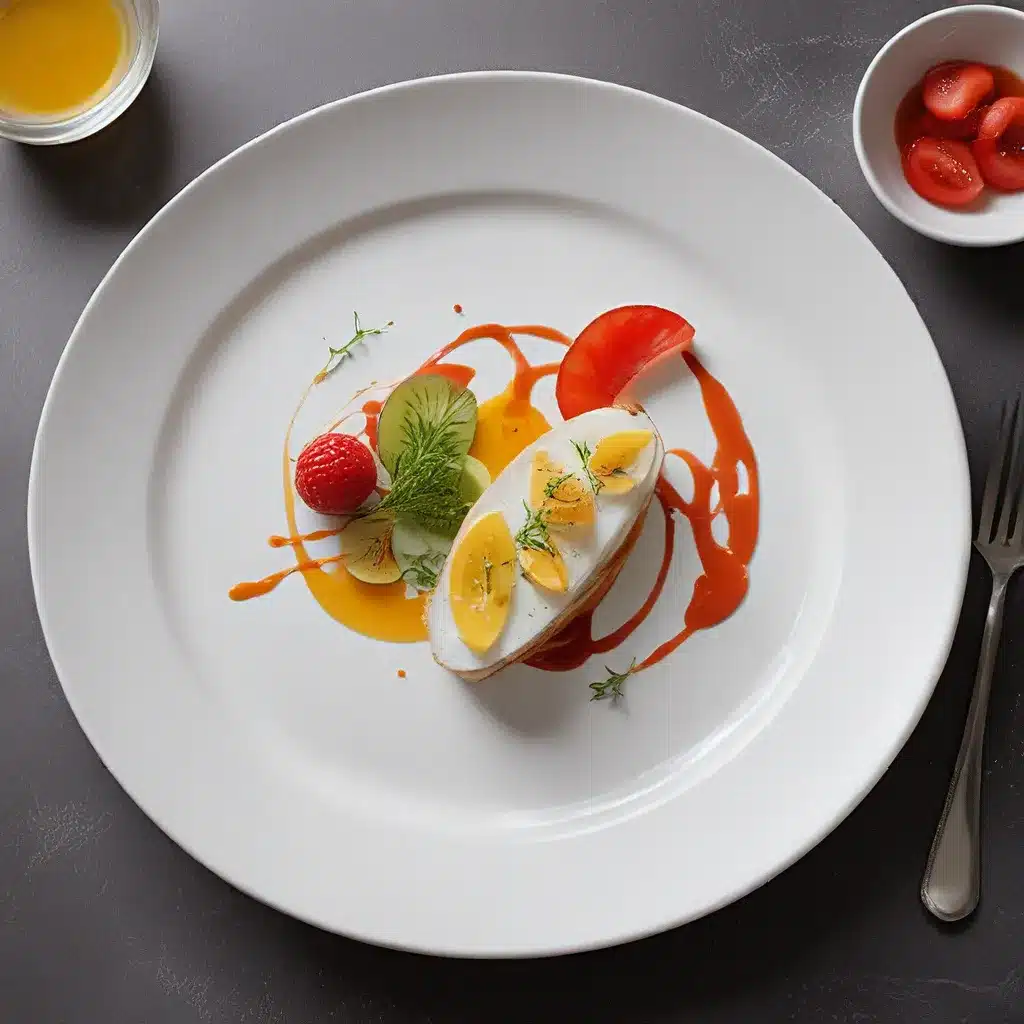
Elevating the Dining Experience Through Purposeful Plating
As a passionate home cook, I’ve always been fascinated by the art of plating. The way a dish is presented can truly elevate the entire dining experience, tantalizing the senses and sparking joy in those who partake. While creating delectable flavors is the foundation of any mouthwatering meal, the visual appeal of a meticulously plated dish can take it to new heights.
Through my research, I’ve discovered that the principles of effective plating extend far beyond simply arranging the components of a dish on a plate. It’s about understanding the interplay of colors, textures, and shapes – and using that knowledge to craft a visually captivating presentation that complements the flavors.
The Fundamentals of Plating
Balance and Symmetry
One of the key tenets of plating is achieving a balanced and symmetrical composition. This doesn’t necessarily mean creating a perfectly symmetrical arrangement, but rather ensuring that the various elements on the plate are visually harmonious and evenly distributed.
Top chefs often use the rule of thirds as a guideline, dividing the plate into three equal sections and placing the main components accordingly. This creates a sense of visual order and guides the diner’s eye around the plate.
Color and Contrast
The strategic use of color and contrast is another essential aspect of plating. Vibrant hues, complementary shades, and contrasting textures can all contribute to a visually stunning presentation. Consider the interplay of bright greens, deep reds, and creamy whites – the visual impact can be truly captivating.
Experiment with different ways of incorporating these elements, such as using garnishes, sauces, and even the natural colors of the ingredients themselves. The goal is to create a plate that is both aesthetically pleasing and evocative of the flavors within.
Composition and Proportion
The overall composition and proportion of a dish are crucial factors in effective plating. This involves carefully considering the size, shape, and placement of each component on the plate. The goal is to create a visually balanced and harmonious arrangement that guides the diner’s eye and enhances the dining experience.
Some chefs recommend using negative space strategically, allowing certain elements to “breathe” and creating a sense of intentionality in the arrangement. Additionally, paying attention to the scale and proportion of the components can help ensure that the dish feels cohesive and well-thought-out.
Mastering the Art of Plating
Perfecting the art of plating takes time, practice, and a keen eye for detail. But by understanding the fundamental principles and experimenting with different techniques, home cooks can elevate their dishes and create truly stunning presentations.
One approach I’ve found particularly helpful is to start with a clear vision for the final plate. Visualize the colors, textures, and arrangements that will best complement the flavors of the dish. This can help guide the cooking and plating process, ensuring a cohesive and intentional final result.
Another key tip is to incorporate multiple layers and elements on the plate. This can include sauces, garnishes, and even architectural elements like towers or stacks. By building depth and visual interest, you can create a plate that truly captivates the diner’s senses.
And of course, don’t be afraid to get creative and embrace your personal style. Plating is an art form, and the beauty lies in the unique expression of each individual cook. Experiment with different techniques, play with unexpected ingredient pairings, and let your culinary creativity shine.
Remember, the ultimate goal of plating is to enhance the overall dining experience. By creating visually stunning dishes, you can transport your guests on a sensory journey, evoking emotions and memories that linger long after the meal has been enjoyed.
So, the next time you’re preparing a meal, take a moment to consider the art of plating. Embrace the challenge, unleash your creativity, and watch as your dishes transform into edible works of art. Who knows, you might just find that the presentation is just as delightful as the flavors themselves.
And if you’re ever in the mood for some exceptional dining experiences, be sure to check out Saint Marc, where the chefs have truly mastered the art of plating.

